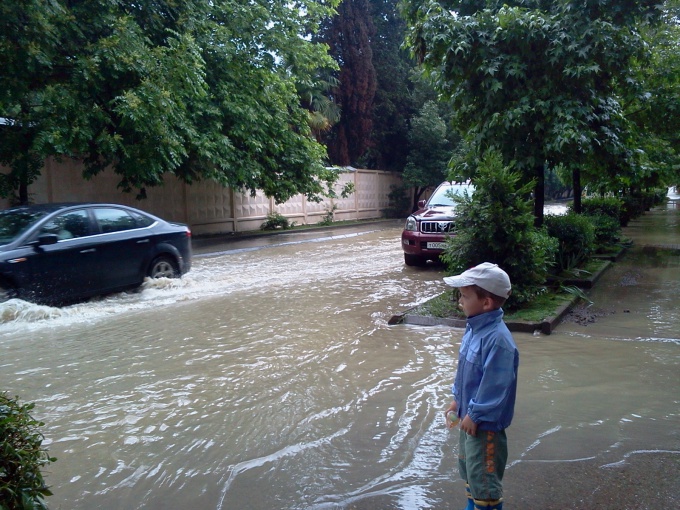By EasyHow
How to measure precipitation
To precipitation include rain, hail, snow, which represent fallen from the clouds water in different aggregate States. The measurement of the amount of precipitation is of great scientific interest, is of great practical importance, for example, to calculate the gutters, and reduced to measuring the amount of water collected in a vessel of a certain volume per unit time (day). Using this method it is possible to know the thickness of the layer of water that would have formed on earth, if water is not leaking into the ground and does not evaporate. Thanks to the installation of recorders on the rain gauges can determine the duration and intensity of the precipitation. To determine the age of the device in mind long-standing interest to the measurement of rainfall is impossible. In the Great encyclopedia edited by S. N. Yuzhakova, published in the early 20th century, and its contemporary encyclopedic dictionary F. A. Brockhaus and Efron, E. A., describes in detail the structure of the rain gauges (precipitation gauges) and their analogues equipped with recorders, pluviographs, and the methods of measuring precipitation, which has not fundamentally changed in our days. Currently, the precipitation measurement is performed by automatic pluviographs, and high precision measurement carried out by the radar mounted on radar stations in the Central aerological Observatory of the Federal service for Hydrometeorology and environmental monitoring.

You will need
- Galvanized cylinder of height 40 cm and diameter 25 cm, copper ring with square poperechnogo section of 500 kV cm, about 25.2 cm in diameter, funnel-shaped baffle with holes with a diameter equal to the diameter of the cylinder, a measuring vessel with a calibration that takes into account the difference of the diameters of the vessels, column height 240 cm with a beveled top, tapered casing.
Instruction
To prepare a galvanized cylinder with a diameter of 25.2 cm and a height of 40 cm In the upper part of the vessel to install a brass ring for strength, the cross-sectional area of the inlet of the vessel shall be 500 sq. cm, at a small height from the bottom to secure the funnel shaped perevozku with holes to reduce evaporation of the accumulated precipitation, the vessel to prevent blowing rain and snow to put in a protective conical housing.
Post, sloping from the top (to prevent the accumulation of snow) with a height of 240 cm to install on the North side (to reduce evaporation under the action of sunlight) a few meters from the houses and trees.At a height of 2 m to position the cylinder of the rain gauge.
A simple and reliable device for measuring precipitation ready. It remains only to daily from 7 to 8 o'clock in the morning to measure the amount of precipitation, pouring the accumulated water in the measuring cylinder. Thus, it is sufficient just to know the daily amount of precipitation. To measure the amount of solid precipitation (hail and snow), you must wait until they will melt, it is possible to place the water meter in a warm room. For this reason, accurate measurement of solid precipitation it is necessary to have two water meter
Useful advice
To measure the duration and intensity of rainfall, the rain gauge must be equipped with a recording mechanism. This requires a drum with paper tape, mounted on the clock mechanism, and the recorder, diveresity depending on the water level. One of the methods is the use of breaking glass, which when filled is emptied, forcing to move the recorder. The recorder can be connected with a glass with weights, hand which returns to the place while reducing the weight of the glasses, close an electric contact or use electromagnet. Another method is the use of floats that followed the lifting of the liquid level move the recorder, as soon as the float level is compared with the upper level of campista the water shall be drained through the outlet siphon. When equipped with a rain gauge data logger there are plenty of opportunities to exercise their creativity and ingenuity.
